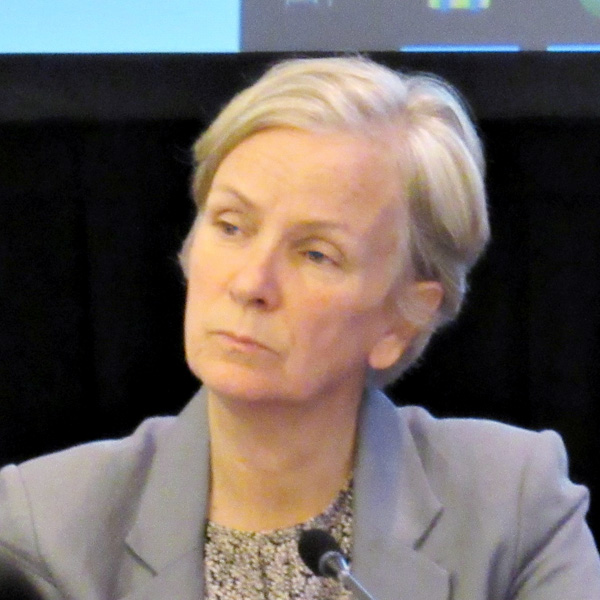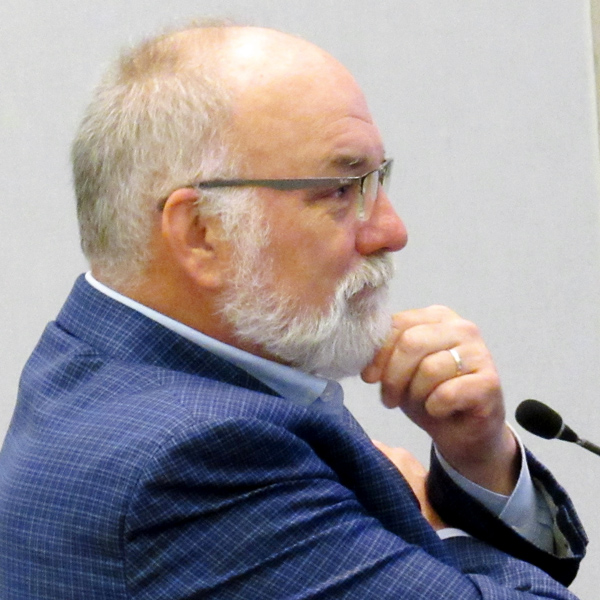INDIANAPOLIS, Ind. — MISO’s Board of Directors discussed concerns over dropping capacity reserves during its board sessions this week as heat blistered the footprint and forced emergency preparations.
As the board gathered this week, MISO operators managed the first serious heat wave of the 2022/23 planning year. The RTO issued a maximum generation alert Monday for MISO South and a footprint-wide alert on Wednesday; both were to expire Wednesday night.
The alerts followed earlier capacity advisories for MISO South on Sunday and the entire footprint Wednesday. MISO also called for conservative operations by all members through 10 p.m. ET Thursday.
The advisories come after MISO’s 2022-23 planning resource auction (PRA) in April unveiled a 1.2-GW capacity shortage across MISO Midwest and triggered a $236.66/MW-day cost-of-new generation entry clearing price for the entire subregion. Though members approached the auction with more capacity year-over-year, the RTO said the resource additions were mostly intermittent and generally less available than retiring thermal generators. (See MISO’s 2022/23 Capacity Auction Lays Bare Shortfalls in Midwest.)
During Tuesday’s Markets Committee meeting, MISO Executive Director of Market Operations J.T. Smith said the capacity deficit doesn’t necessarily mean MISO must revert to controlled load shedding. The RTO can access imports and its load-modifying resources during tight conditions, he said.
“There is some risk sitting out there, but to date … there hasn’t been a summer situation where MISO had to go through all of its emergency operating procedures,” Smith told board members.
He said staff forecasted a 122-GW peak for Wednesday, 2 GW shy of its overall summer peak prediction. Smith said while MISO appeared to have enough firm generation on hand beforehand, units tripping offline in real time make the difference.
“The interesting factor will be generator performance,” he said.
The grid operator’s and the Organization of MISO States’ 2022 resource adequacy survey has painted an increasingly dark supply picture. According to the survey, capacity deficits could reach 2.6 GW next year and as much as 11 GW by the 2027/28 planning year. (See OMS-MISO RA Survey Says Supply Deficits Could Top 10 GW by 2027.)
MISO Director Nancy Lange asked whether the RTO needs a better “picture of generation retirements and their time frame.”
 MISO Director Nancy Lange | © RTO Insider LLC
MISO Director Nancy Lange | © RTO Insider LLC“Do we need additional insights or is there something I’m missing?” she asked. Lange said MISO could have withstood the uncertainty “in the good old days” but that now, it’s crucial it knows which units it stands to lose.
Smith acknowledged that the OMS-MISO survey results have recently been “rosier” than the capacity auction results. He said that this year’s survey could influence some generation owners’ decisions to keep or bring more capacity online.
MISO currently has about 124 GW of capacity at various stages of study in its interconnection queue. Historically, about 20% of the generation that enters the queue reaches commercial operation.
President Clair Moeller said MISO is currently holding conversations with OMS on how it can achieve a “deeper level of collaboration” with its states on resource adequacy.
“They have the majority of the authority,” Moeller reminded the board. “We don’t have the authority in the regulatory process to make anybody do anything. Our big weapon here is transparency.
 MISO President Clair Moeller | © RTO Insider LLC
MISO President Clair Moeller | © RTO Insider LLC“They’re suffering through this same problem of needing more information,” he said. Moeller pointed out that jurisdictional utilities usually complete integrated resource planning once every three years and regulators can be caught off guard on how utilities’ plans evolve.
Lange called the media’s emphasis on possible rolling blackouts unhelpful and potentially sensationalist. She asked whether MISO could pin a number on its chances of entering controlled load shed.
“Could there be a heat dome event that sits over PJM and MISO? It’s unlikely, but it could happen. I can’t quite put a probability on that, but if it does happen, we will have a difficult time,” said Renuka Chatterjee, executive vice president of system operations. “We try to keep the lights on. Sometimes we can’t keep all the lights on, and we have to make some choices.”
Independent Market Monitor David Patton estimated that about 5 GW of MISO’s generation has retired prematurely, some due to the footprint’s uneconomic capacity market conditions. He reiterated that the grid operator should have used a sloped rather than vertical demand curve in its capacity auction.
“If we ignore economics, we expect that we’ll get bad outcomes, and this is a bad outcome … If we value reliability, we have to fix this market,” he said.
Patton said he now thinks “there’s a lot of interest among states on reforming the demand side of the market.” He met privately with state regulators after the Markets Committee meeting to discuss potential capacity market adjustments.
OMS Calls for Regroup on RA
Some OMS members sent a letter to MISO leadership last week, calling for greater visibility into and a reexamination of how the grid operator optimizes its members’ resource fleet. (See OMS Drafting Letter over MISO Resource Adequacy Concerns.)
“As evidenced by the recent PRA results, it is time to review … market signals and reliability requirements, and to enhance the collaboration between MISO, the states, and other entities responsible for resource adequacy,” most OMS members wrote. “Put simply, MISO must ensure it has the markets and planning processes in place that can deliver the reliability and economic efficiencies its members expect.”
State regulators said they need more transparency into how load is planned to be served within MISO so they can “fully understand the landscape of risks associated with decisions that are not subject to their oversight.”
The regulators said the capacity auction shortfall is “further impetus for our ongoing efforts to work together to provide transparency, reduce uncertainty, and ensure roles and responsibilities for resource adequacy are crystal clear so we are not reduced to pointing fingers or disclaiming these responsibilities.”
OMS said MISO must immediately act to reduce barriers on both the transmission and distribution system to gain access to new generation. It said the RTO should “ensure resource retirements are properly and holistically studied before states finalize their decisions.”
“The region should not wait for the large number of distributed resources — as MISO has recently proposed in its [FERC] Order 2222 implementation timeline — that can often be deployed much more rapidly than grid-scale resources,” the organization said. “Likewise, MISO must move with haste to re-examine its study process for retiring resources so states can fully consider the impact retirements have on the region’s and the respective states’ electric reliability.”
The grid operator has proposed more frequent steady-state analyses and more attention to transmission system reliability when analyzing retiring generation but does not plan to consider resource adequacy in the studies. (See MISO Bolstering Generation Retirement Studies Amid Capacity Shortage.)
OMS finished by saying it believes in the MISO system’s various planning activities and interconnectedness. However, it also said that the region is “best served when decisionmakers at all levels engage in transparent, cooperative and respectful communication.”
The letter was signed by 11 of OMS’ 17 members. Regulators from Louisiana, Mississippi, Texas, Montana, the New Orleans City Council and the Canadian province of Manitoba did not add their signatures. Because the letter was not taken up under normal OMS board meeting prcedures, OMS does not consider the letter an official position.
Spring Brings High Prices
Load has returned to normal in the spring as the pandemic winds down, averaging about 70 GW per day with a seasonal 104-GW peak demand. Real-time prices shot up to $57/MWh on inflated fuel costs from $26/MWh last spring and $18/MWh in two years ago, when the pandemic began in earnest.
“This was a very high-cost quarter,” Patton said. He said natural gas prices rose 140% over last spring, with prices routinely going above $8/MMBtu in the quarter.
Patton said coal unit operators are beginning to conserve their stockpiles again as they did during the winter, holding out for the high-priced and hottest summer days.
He also said transmission congestion was “unbelievably high,” with real-time congestion costs surpassing $1 billion during the spring.
MISO Sees Members’ Savings Increase
Against this backdrop, MISO debuted a forecasted value proposition that bets market participants will more than double their savings by 2040 through membership. The forward-looking estimate foresees members enjoying a benefit-to-cost ratio of about 26:1 by 2040, up dramatically from its current 11:1 ratio.
MISO last year said it saves its membership about $3.4 billion annually on average and approximately $36.3 billion in total since 2007. (See MISO: 2021 Member Savings Exceeded $3B.)
The value proposition study normally quantifies the annual savings it generates for its membership against utilities going it alone. MISO included the usual savings measures of more efficient generation dispatch, its diverse geographic footprint, a diminished need for new generation, and the sturdier reliability that comes with a resource sharing pool. Staff pointed out in its projections the benefits of being able to access carbon-free energy from other regions and to more flexibly incorporate renewable energy into the resource stack.
MISO CEO John Bear called the new value proposition a “significant increase in value delivery to MISO membership.”
“In the future, MISO will continue to play a significant role in ensuring reliability and optimizing flexibility in our large and diverse footprint as it transitions towards a more decarbonized system,” he said in a press release.
“[T]he accelerated transition to a low-carbon future will create challenges, which can be more reliably and efficiently solved using the region’s scope and diverse resources, creating even more value for customers in the future,” said Wayne Schug, MISO’s vice president of corporate strategy and business development.
The grid operator said it assumed a 4.9% increase in membership costs per year to gauge the savings, noting the increase is “well above recent levels of inflation and historical MISO costs.”
MISO said it will continue to conduct an annual value proposition study but said, “given the magnitude of change the industry is undergoing, it is important to provide indications for the future value range MISO may bring to the region.”




